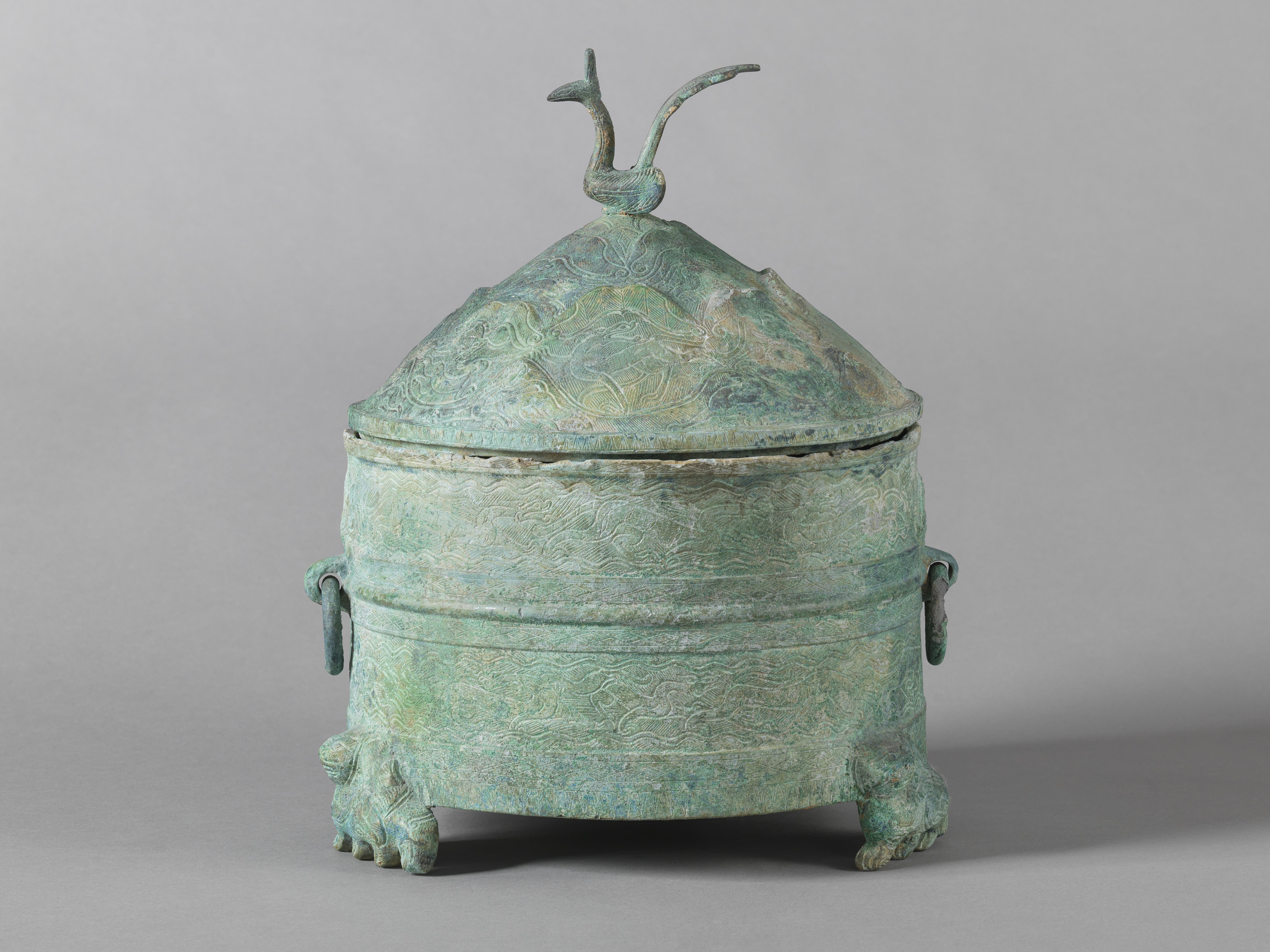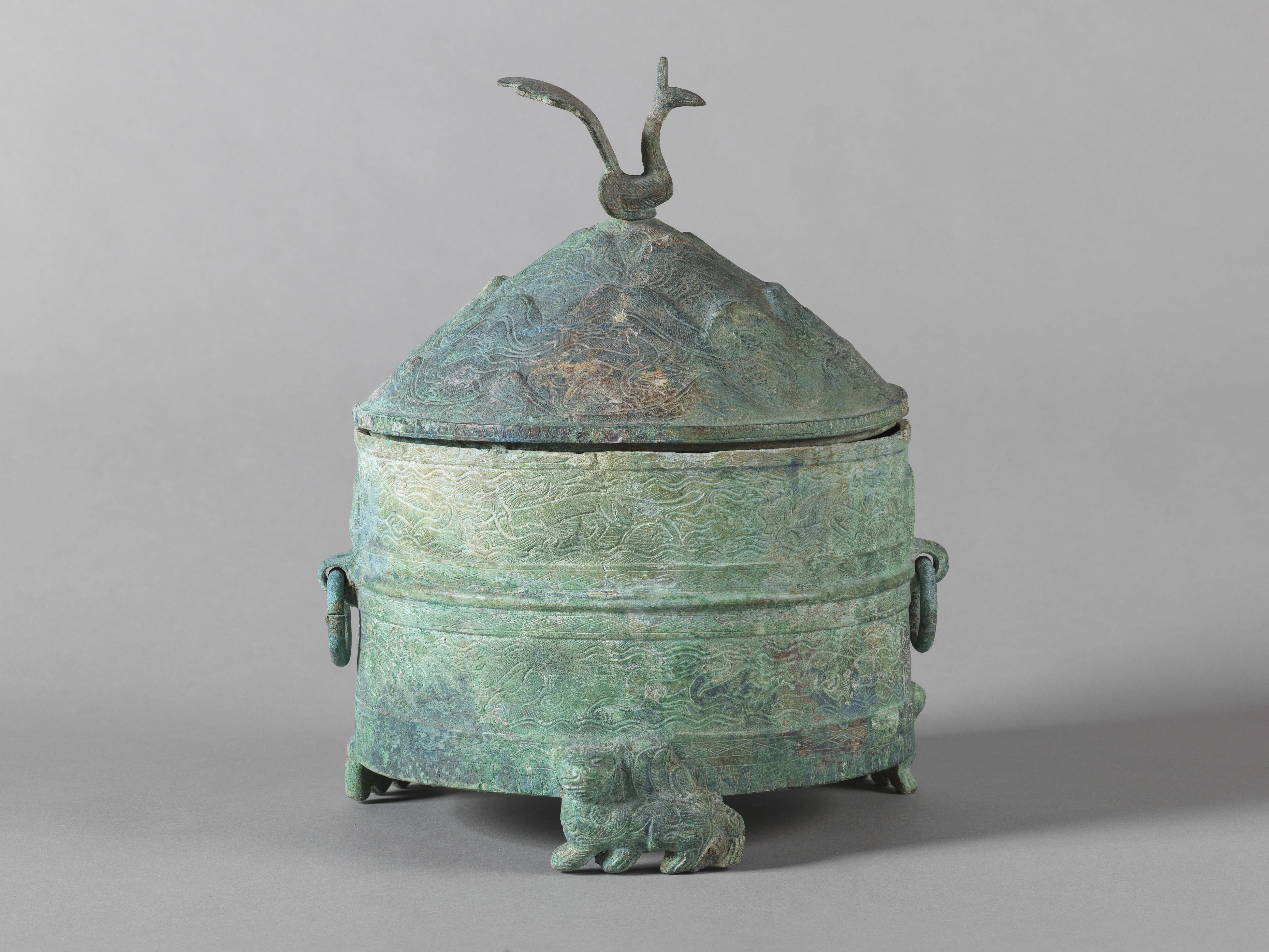
vase wenjiuzun 温酒尊
Bronze, Fonte
Vaisselle et ustensile de cuisine, Récipient (vaisselle), Vase
Don manuel : Fondation Antoni Laurent; Société des Amis du musée Cernuschi
M.C. 9892
This lian, designed to contain fermented beverages, is an example of a particular type of work that is well represented in Western museums.
These bronzes are characterised by the use of a light-green-coloured alloy and by the incised decoration on their well-defined bands; the latter are separated by moulded bands that sometimes feature geometrical designs. These highly recognizable particularities distinguish them from wares made in northern China, in Shaanxi and Henan, near the capitals of Xi’an and Luoyang. They are attributed to workshops in southern China.
Tomb No. 3 in a necropolis excavated near the village of Pingba, in Qingzhen district (Guizhou) produced a bronze of this specific type, as well as a lacquer cup dating from the year 3. This chronological marker is important and enables the dating of all works from the 1st century AD. Excavations have revealed comparable but isolated pieces, over a huge area stretching from Lelang in northern Korea to Lach-tu’o’ng in Thanh Hoa province in Vietnam. Some come from Changsha and Guangdong, but there are too few of them to establish these two centres as their place of production. However, a single tomb, discovered in 1970 in Hefu district (Guangxi), contained a significant number of similar bronzes. Today, Guangxhi would appear to be the most likely place of production of these works made with this particular alloy and with these decorations.
As on other similar pieces, three small felines each support one of the feet of the vessel. The lid, topped with a peacock, the symbolic animal of the goddess Xi Wangmu, is in the shape of a mountain, an allusion to the three Islands of the Immortals, Penglai, Fangzhang and Yingzhou, in the eastern sea, beyond the mouths of the Great River.



